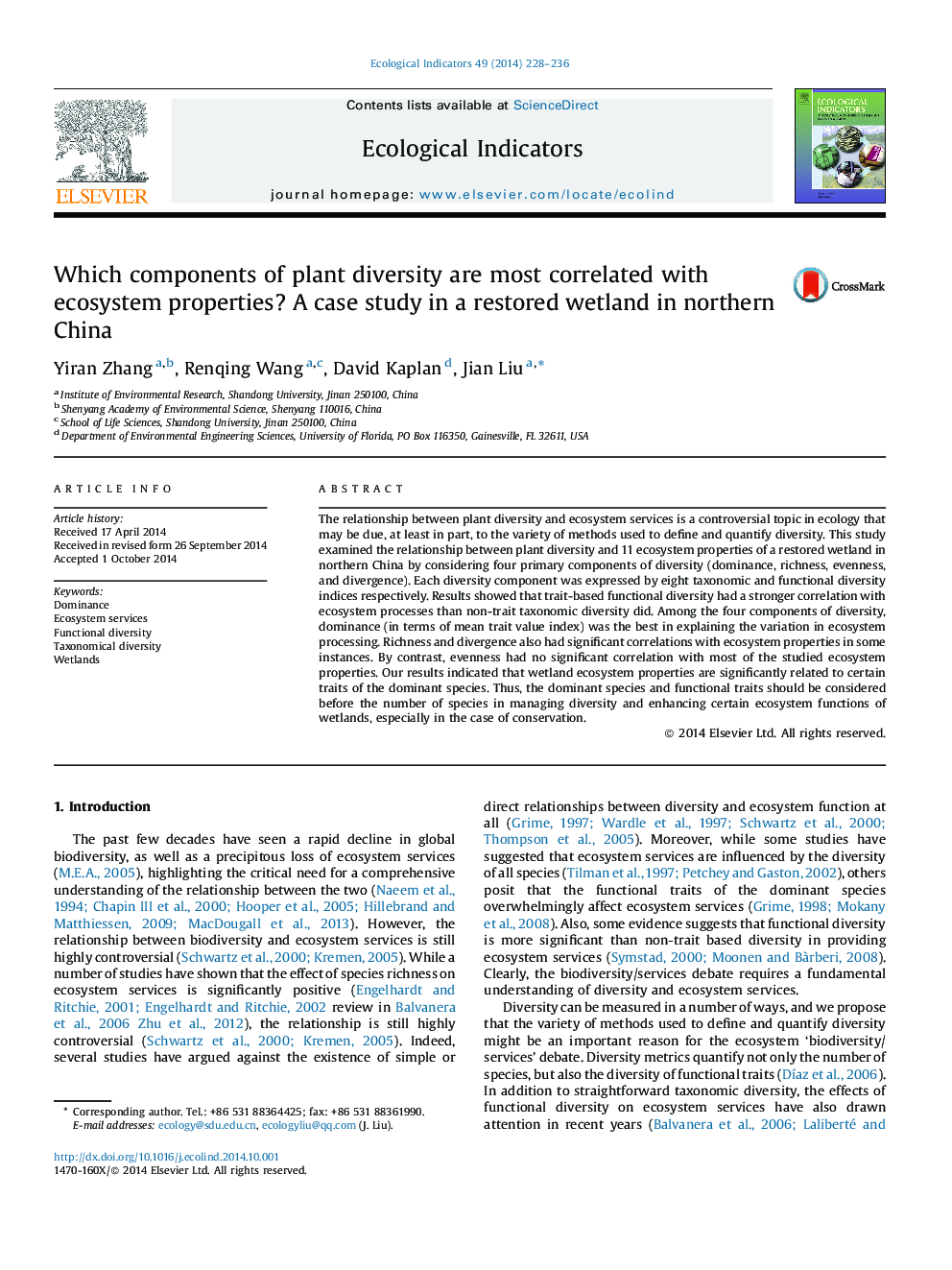| Article ID | Journal | Published Year | Pages | File Type |
|---|---|---|---|---|
| 6294816 | Ecological Indicators | 2015 | 9 Pages |
Abstract
The relationship between plant diversity and ecosystem services is a controversial topic in ecology that may be due, at least in part, to the variety of methods used to define and quantify diversity. This study examined the relationship between plant diversity and 11 ecosystem properties of a restored wetland in northern China by considering four primary components of diversity (dominance, richness, evenness, and divergence). Each diversity component was expressed by eight taxonomic and functional diversity indices respectively. Results showed that trait-based functional diversity had a stronger correlation with ecosystem processes than non-trait taxonomic diversity did. Among the four components of diversity, dominance (in terms of mean trait value index) was the best in explaining the variation in ecosystem processing. Richness and divergence also had significant correlations with ecosystem properties in some instances. By contrast, evenness had no significant correlation with most of the studied ecosystem properties. Our results indicated that wetland ecosystem properties are significantly related to certain traits of the dominant species. Thus, the dominant species and functional traits should be considered before the number of species in managing diversity and enhancing certain ecosystem functions of wetlands, especially in the case of conservation.
Related Topics
Life Sciences
Agricultural and Biological Sciences
Ecology, Evolution, Behavior and Systematics
Authors
Yiran Zhang, Renqing Wang, David Kaplan, Jian Liu,
